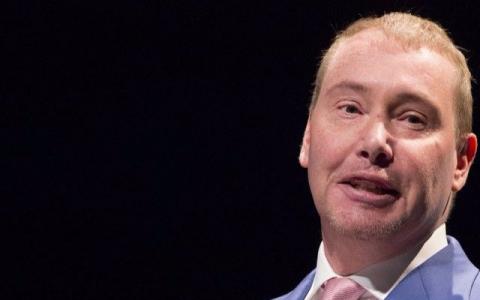
A nervous Fed breaks the fear factor that drives fixed income success. Doubling down on the dread works for a little while but it’s both addictive and unsustainable.
I like Jeff Gundlach as a money manager. He’s got an engaging, differentiated take on the bond market . . . and everyone who works with bonds knows how valuable and difficult that is.
But when he puts on his asset gathering hat, he can get too contrarian for anyone’s good. Just look at his election forecasting this year.
Fund managers make a lot of bets and some of them have nothing to do with the market. Sports, for example. They weigh the odds, pick a team and history reveals how accurate their predictions were.
Politics is a blurrier field, especially in Bond Land where government policy factors into the essential economics of how much debt is available, how it’s structured and what coupon rates it carries.
A good bond manager needs to know which way the political wind is blowing. On that front, Gundlach seems to have gotten it wrong, although he hedged a little at the end.
Trump is going to have a hard time pulling a win out of these numbers. But despite all the doomsday rhetoric about mass unrest, society has yet to implode.
Gundlach talked a little about that kind of disintegration. While it might have been a long shot possibility, the world just didn’t end.
That’s a problem for anyone who survives on doomsday scenarios. We’ve all seen the pitches, year after year: end of dollar predicted, market crash, economic disaster.
It hasn’t ever happened. When it does, we’ll all have other things to worry about. And until it does, doomsday bets are dead money.
The only person who wins is the house. The more fear the house generates, the more cash it captures. That’s what Gundlach does when he treats worst-case scenarios like they’re likely scenarios.
The odds of the world ending are non-zero. But they’re so close to zero that as yet they have never paid off.
Is there any other way for him? Bonds are dead money as long as the Fed’s infinitely fat finger is on the scale. They pay negative real yields across the curve.
That’s not investor fear. If investors were really that terrified, they’d withdraw their money, buy gold or, as a compromise, investigate FDIC-insured vehicles and take their chances with inflation.
At that level, you’re looking at maximum risk aversion. The Fed with its infinite resources has skewed the math beyond that point. Nobody should be in Treasury debt or any other negative-yield instrument.
Gundlach can finesse performance a little by hedging and taking on leverage, but that proposition remains a tough sell unless he can somehow push the fear gauge higher.
That’s theoretically in his wheelhouse. Bonds are usually about smoothing volatility in pursuit of more predictable returns. You know what yield you’re locking in. You feel safer.
Right now there’s no upside there. People are never going to feel less safe than they are when they’re convinced stocks are about to crash.
Infinite money is already crowded into Treasury bonds. Any relaxation of risk will push first small accounts and then the Fed back out until yields normalize. That’s months away.
Can coupons drop below zero? No. Can investors be lured into buying them strictly as a wealth preservation vehicle? Yes, as long as they’re scared enough.



